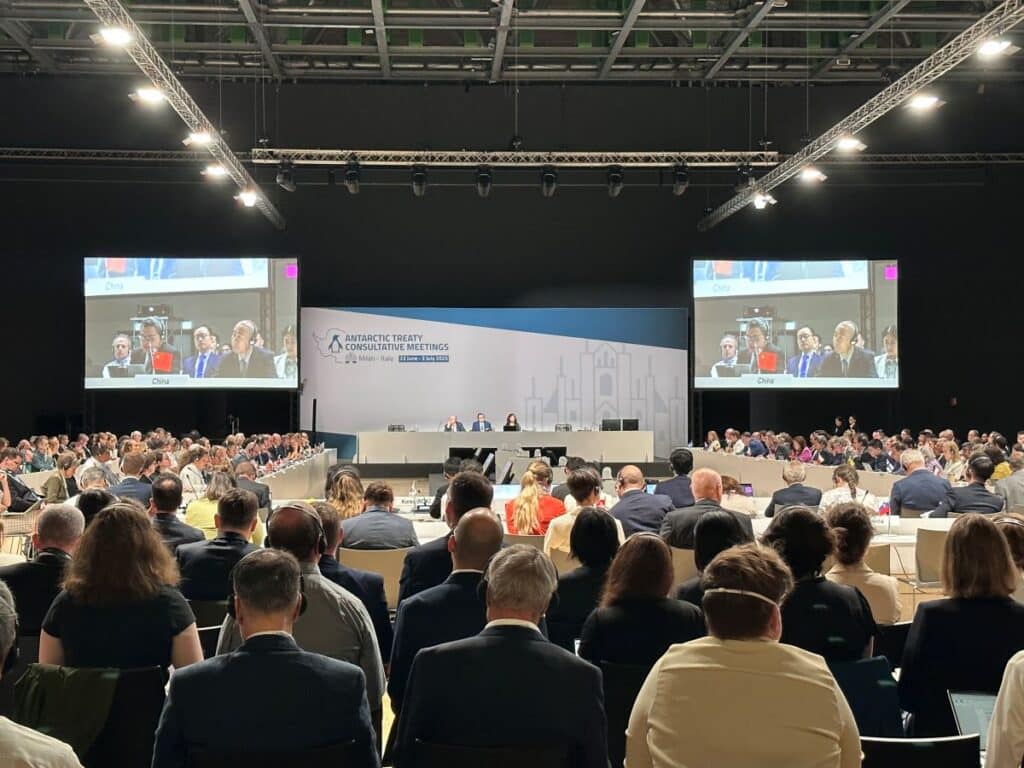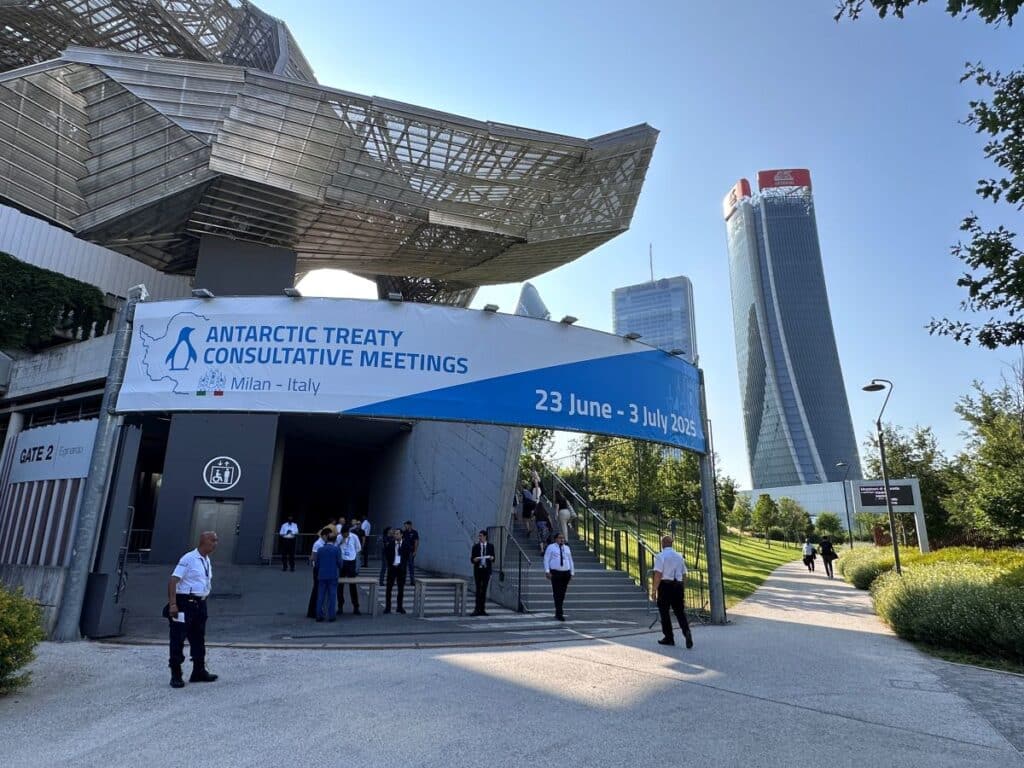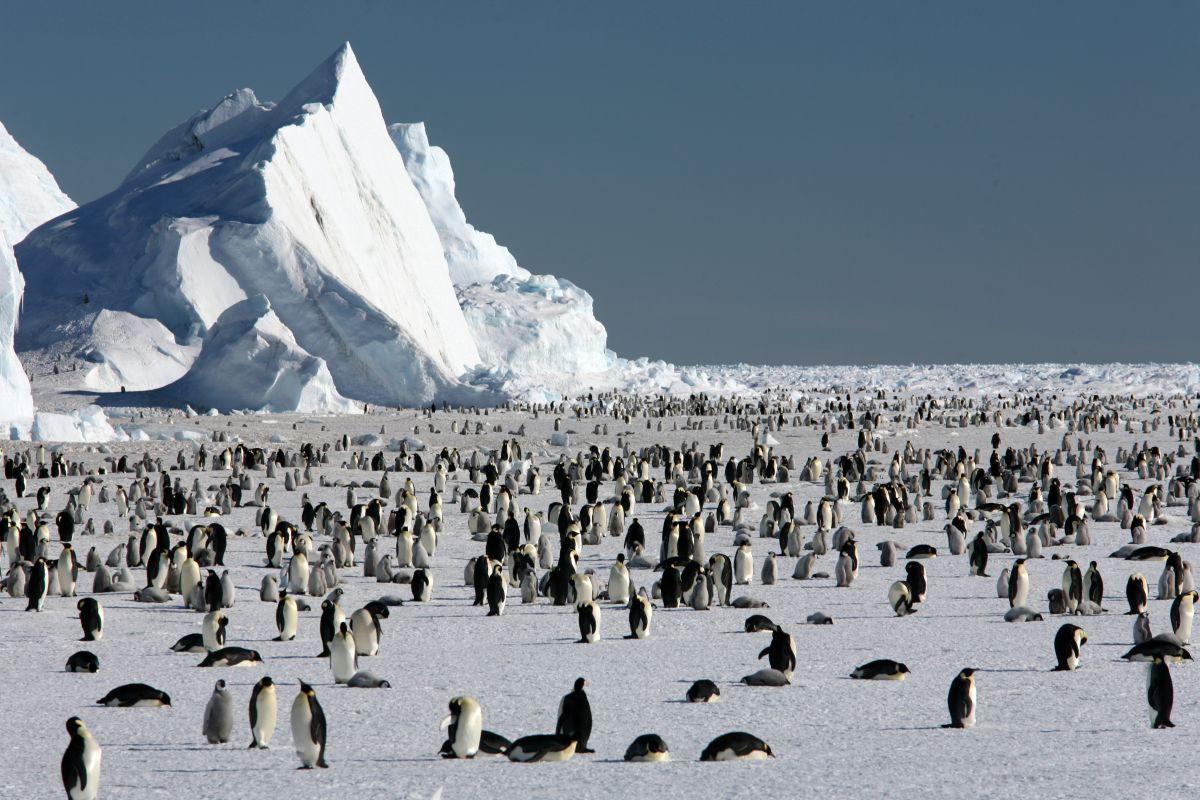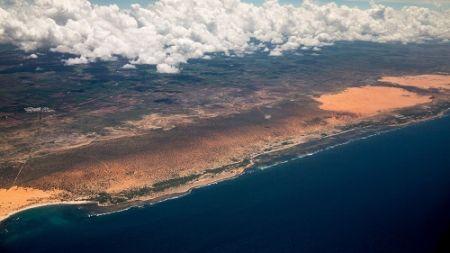The 47th Antarctic Treaty Consultative Meeting (ATCM) concluded on July 3rd in Milan, Italy. Although it received little media coverage, the meeting highlighted emerging challenges facing the polar continent, which is undergoing rapid changes due to climate change and increasing human activity.
Antarctica is the last continent to have been discovered—just 200 years ago. Its surface area is one and a half times that of Europe. It is covered by two massive ice sheets, with thicknesses reaching up to 4 kilometers. The Antarctic ice sheet contains 70% of the planet’s freshwater. Due to extreme climatic conditions, establishing permanent human settlements is extremely difficult. Most importantly, this vast territory belongs to no country. Human activities are governed by the Antarctic Treaty and the Antarctic Treaty Consultative Meetings (ATCM) held annually.
The Antarctic Treaty is an international agreement signed in Washington on December 1st, 1959, by 12 countries, all of which had conducted scientific projects during the International Geophysical Year (1957–1958) and had established bases in Antarctica. France was one of these original signatories. The Treaty entered into force in 1961 and now has 58 signatory states that participate in the meetings.
Twenty-nine of these countries are Consultative Parties, meaning they have the right to vote during negotiations at the ATCM. The others are Non-Consultative Parties, who may attend but do not have voting rights.
Observers also attend the meetings, such as SCAR (the Scientific Committee on Antarctic Research), as well as experts and NGOs like IAATO (International Association of Antarctica Tour Operators), and ASOC (Antarctic and Southern Ocean Coalition), among others. These groups participate in discussions but do not have voting power.

The Pillars of the Treaty
The core principles of the Antarctic Treaty are as follows:
- Antarctica shall be used exclusively for peaceful purposes – military bases or nuclear testing are strictly prohibited.
- Scientific research and international cooperation are guaranteed and encouraged, with open sharing of information.
- Territorial claims are frozen – no new claims are recognized, and existing ones are neither denied nor acknowledged.
- All scientific stations, ships, and equipment can be inspected at any time by other Treaty members to ensure compliance.
Consensus-Based Decisions Take Time
The 47th Antarctic Treaty Consultative Meeting (ATCM), held in Milan from June 23 to July 3, was organized by the Italian Ministry of Foreign Affairs in cooperation with the Antarctic Treaty Secretariat. It brought together 450 delegates from 58 countries.
A total of 52 working papers were submitted, some jointly by multiple nations, alongside dozens of information papers and recommendations.
While many decisions were eagerly anticipated, the meeting did not yield any major breakthroughs. Numerous working proposals were postponed until the next ATCM, scheduled for 2026 in Japan. This is largely due to the consensus requirement: for any measure to be adopted, unanimous agreement is needed—a single objection from one or two countries is enough to delay a decision.
For instance, a joint proposal by Germany, France, Norway, the United Kingdom, and Monaco to designate emperor penguins as a specially protected species under Annex 2, Article 3 of the Protocol has not yet been adopted. Similarly, requests from Canada and Belarus to become Consultative Parties (with voting rights) were not approved and will be reconsidered next year in Japan.

Diplomacy Takes Time — Sometimes Too Long
The pace of diplomacy can be extremely slow, too slow according to some observers. Recent scientific studies on emperor penguins show their population may decline faster than expected due to habitat loss linked to ocean warming and the shrinking sea ice.
Regulating Tourism and Other Rapidly Growing Activities in Antarctica
There is currently no comprehensive, continent-wide framework to regulate Antarctic tourism; management is done site by site. The 47th ATCM has yet to make progress on this front. However, the Netherlands is leading a proposal to address the unprecedented boom in tourism in the region. According to the International Association of Antarctica Tour Operators (IAATO), about 110,000 visitors are expected during the 2024-2025 season.
Our information indicates that delegates spent many hours negotiating a potential agreement, which could have been a major success for the ATCM. However, all decisions have been postponed to future meetings, likely in 2029, when the ATCM will be held in the Netherlands — the country behind the initiative.
Opening Negotiations for Greater Credibility and Trust
The 47th ATCM was held behind closed doors; meetings were not accessible to media without accreditation. Only the opening session (which is public by statute) was open for about 20 to 30 minutes.
Some event observers described the process as having an « iron curtain » and recommended greater openness. Discussions took place within the ATCM about the need for more transparency, asking that meetings become more accessible to media and even to the general public.
Transparency will be introduced gradually. Australia, the Netherlands, and South Korea presented a working paper (No. 16) proposing media accreditation at ATCM, regular press briefings, advance publication of documents, and increased participation of NGOs (currently about ten).
Japan, which will host the next ATCM in 2026 in Hiroshima, has already raised the issue of greater transparency and announced a webinar titled « Strengthening the Transparency of the Antarctic Treaty System » scheduled for July 31, 2025, with registrations open now.
Source: goodplanet




